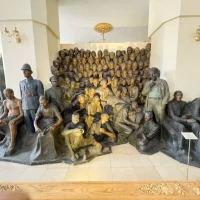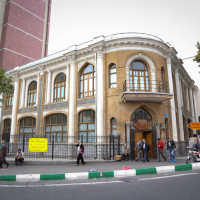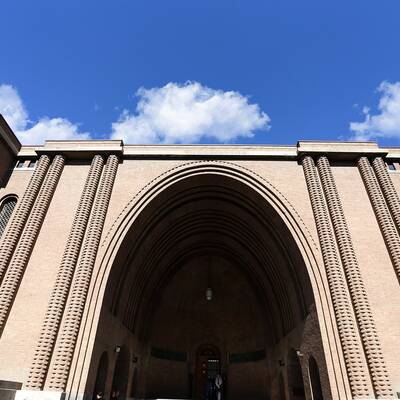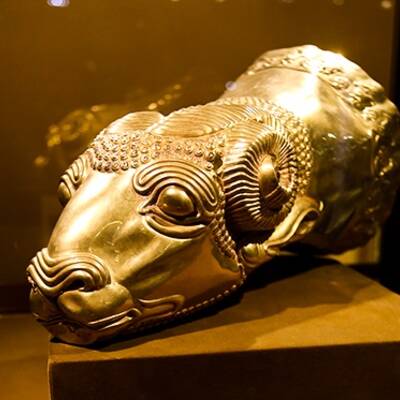
Ali Akbar Sana’ti Museum
The Museum of Ali Akbar San’ati was established in 1325 SH in Tehran. The museum was, in fact, created through Abdol Hossein Sana’ti Zadeh Kermani’s suggestion and efforts. He was Haj Ali Akbar Sana’ti Zadeh Kermani’s son, the establisher of Sana’ti orphanage in Kerman. He is also known as the father of historic novel of Iran and his most important work, that is Majma’-e Divanegan (means the club of crazy people), was considered, by the experts, to be the first utopia in Persian literature. Abdol Hossein Sana’ti Zadeh Kermani restored a remained mansion from Qajar, in Imam Khomeini street, to establish the museum in order to exhibit the artworks of Ali Akbar Sana’ti who raised in the orphanage of his father.
The museum building has two floors with beautiful columns and capitals decorated in stucco. The façade of the building is brick decorated in seven-color tiles. The house was inscribed on the list of Iran National Heritages in 1385 SH and reopened in 1396 SH after a long-term closure for a total restoration. Ali Akbar Sana’ti (artist) was born in 1295 in Kerman.
His father was dead of Plague, in the late of World War I, and since his mother couldn’t afford living expenses took him to the orphanage of Haj Ali Akbar Sana’ti. When Haj Ali Akbar discovered his painting talent encouraged him to learn the basics of painting and drawing in Kerman and after that sent him to Sanaye Mostazrefeh School in Tehran where he studied painting and sculpture under the most highlighted maters of that time. Ali Akbar Sana’ti left more than six thousand paintings and sculptures made of different materials some of which are kept in Tehran Sana’ti Museum and some in Sana’ti Museum of Contemporary Arts in Kerman.
Interesting among the artworks exhibited in Sana’ti Museum of Tehran are a group statue named Qajar political prisoners, Ferdowsi, Sa’di, Crucified Jesus, Dehkhoda, Kamal al-Molk, Karim Khan Zand, Jawaharlal Nehru, Mahatma Gandi, Louis Pasteur, Malek al-Shoara Bahar, Shah Abbas, Nader Shah Afshar and many more. The sculptures are located in the first floor of the museum and the second story has been devoted to watercolor tableaus of the artist in most of which the subject is the portraits of highlighted figures like Nima Yushij, Imam Khomeini, Mossadeq, ordinary people, natural landscapes and animals.





